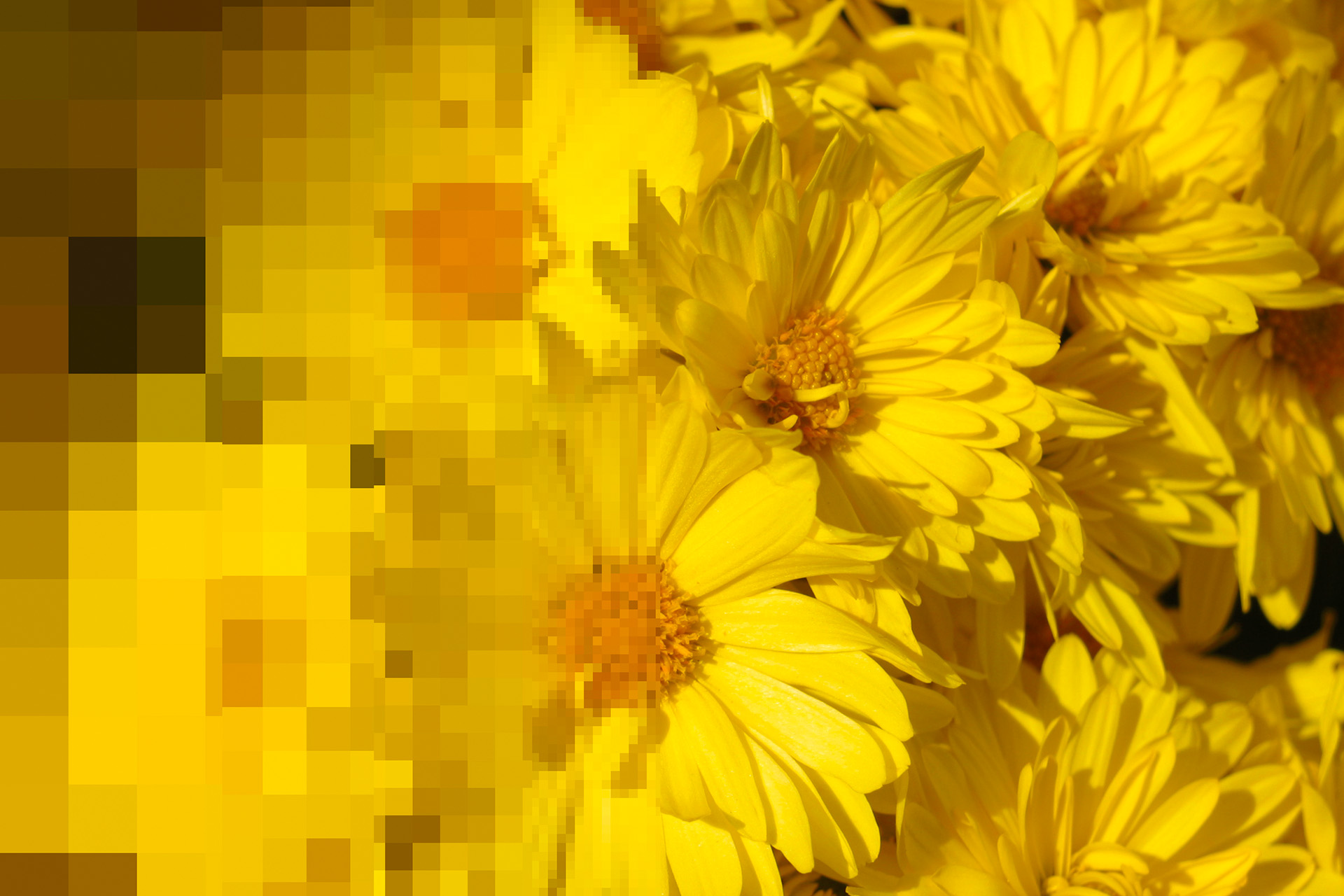Colour is a critical quality factor in a digital image file. To understand the terms colour depth and colour space, let's take a look at how the colourfulness of a pixel is stored.
Colour depth is the number of possible brightness or colour gradations in an image file. The human eye can distinguish about 100 different shades of a colour - for example, 100 different shades of blue. In digital image capture and processing, the standard is 256 levels of brightness per colour channel. To store this colour information in a digital image, eight bits of memory is required. This specification can also be found in the name of the image data.
A black and white image is also an 8-bit image with a maximum of 256 different brightness gradations in a single existing colour or brightness channel. Unlike black and white images, colour images are additively mixed from three colour channels of red, green and blue (RGB). Each colour has a separate channel. With an 8-bit colour depth, 256 brightness differences can be displayed per colour channel and combined as required. This results in a total of 16.7 million possible variations or colour nuances (256 red x 256 blue x 256 green). If the values for red, green and blue are all zero, the result is black; 255, 255, 255 produces white. If the three colour components are equal (e.g. 150, 150, 150), they define a neutral grey tone. The memory required is 3 x 8 bits, or 24 bits. The result is a 24-bit colour image, known as a truecolour image. This can be displayed and output by truecolour devices such as computer monitors, graphics cards and printers, which all operate at a maximum colour depth of 24 bits. However, 24 bits is not the end of the colour depth quality scale. Some devices work at 30, 36 or even 48 bits.
The higher the colour depth, the better your EOS camera, for example, can distinguish fine gradations in shadows and highlights. At 30 bits, there are around a billion nuances instead of the 16.7 million, and at 36 bits there are as many as 68 billion. Although this enormous range of colours is ultimately reduced to the usual 24 bits for further processing, the more extensive 'source material' allows the critical areas to be reproduced with greater differentiation. The EOS works in JPEG format with the usual 8-bit depth per channel, while RAW images are recorded with up to 14 bits per channel. So if you want to get the most out of your colours, shoot in RAW mode.
Calculating colour depth
8 bit = 256 gradations per colour channel
10 bit = 1,024 gradations per colour channel
12 bit = 4,096 gradations per colour channel
14 bit = 16,384 gradations per colour channel
16 bit = 65,536 gradations per colour channel
From colour depth to colour space
Having explained in the previous section that the colours in an image are assigned numerical values between 0 and 255, there is now another complicating factor: It is not specified which numerical value actually corresponds to which colour. This connection is only made by the so-called colour space. Colour spaces define the range of colours that can be displayed and how a colour within that range is represented by its numerical value.
sRGB or AdobeRGB - which is the right colour space?
Your EOS offers two colour spaces: sRGB and Adobe RGB. Although the latter can display more colours than sRGB, Adobe RGB has the disadvantage of being difficult to process. Each device in the digital workflow chain, from the camera to the monitor, image editing software and file output, must be set up to work with Adobe RGB. However, there are no compatibility issues with the sRGB colour space. It has become the standard for Windows-based computers and is also supported by older printers. The sRGB colour space is fixed in both automatic programmes. sRGB is therefore straightforward to use and suitable for those inexperienced in colour management.
Conversely, Adobe RGB is the first choice for quality-conscious users with an affinity for colour management. Like high colour depth, a wider colour space gives you more freedom when editing images.
Good to know
When photos are taken in Adobe RGB mode, the default file name changes: instead of IMG_0001.jpg, etc., the name begins with an underscore instead of the first letter, e.g. _MG_0001.jpg. For RAW images, you can change the colour space afterwards using RAW software such as Digital Photo Professional (DPP).
